2024
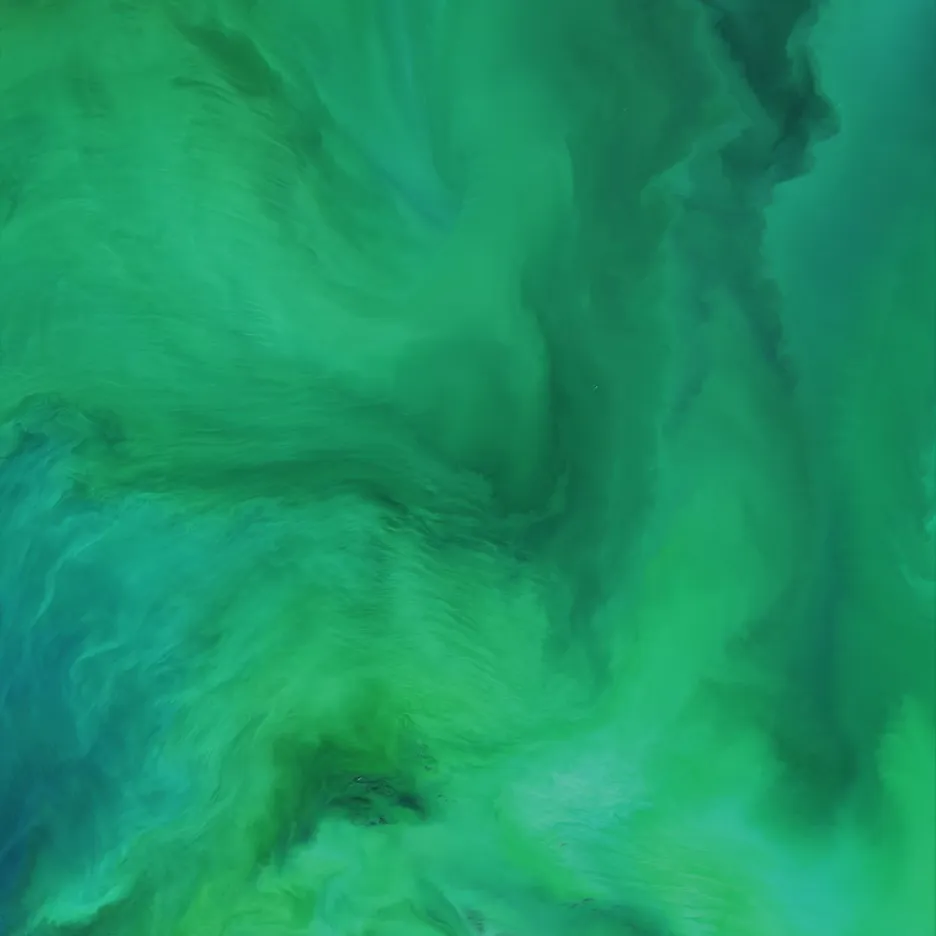
Once again, there were amazing things to discover in 2024! Of course, we couldn't include everything worth to mention in the calendar. Please note that not all images are necessarily from 2023, as some effects - including those from other years - were only "discovered" by us this year, but we don't want to withhold them from anyone.
This year's cover page shows an algal bloom in the Caspian Sea in true color and is a detail of the Sentinel-2 image from July. The attentive viewer will be reminded of the sheer dimension of the data collected: the original image from July actually has an edge length of around 33,900 pixels.
Best regards and lots of fun
Michael Engel
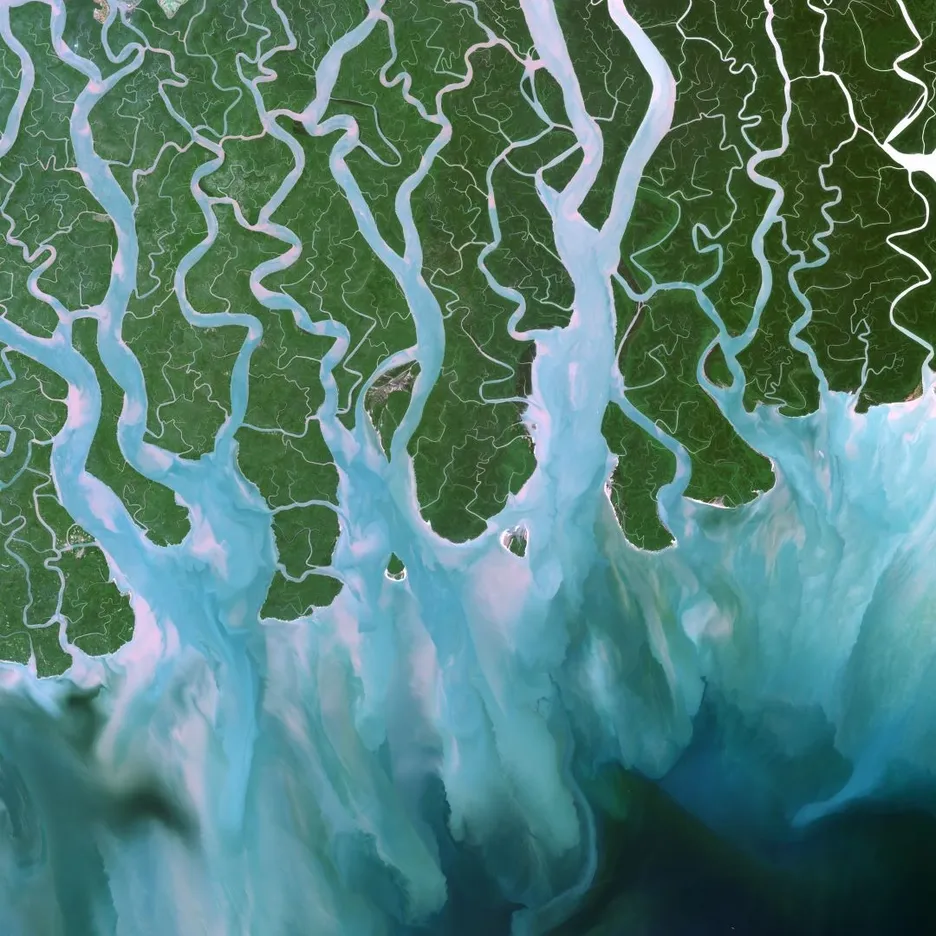
The Sundarbans are the largest contiguous mangrove forests in the world. They stretch across India and Bangladesh and are crossed by the Ganges, Brahmaputra and Meghna river systems, the richest in water in Asia. The fractal-like shapes of the ever-branching and ever-shrinking river arms are home to a species-rich ecosystem and represent one of the last refuges of the Bengal tiger.

The northern and the southern Patagonian ice sheet are the remains of the former ice sheet that covered large parts of present-day Chile and Argentina. Although most of the mountains are around the 3,000m mark, the extreme southern location and the associated low temperatures have led to the largest glaciation in the southern hemisphere outside of Antarctica. Note the extensive fjords, which appear to glow due to the sediment carried in by the glaciers.
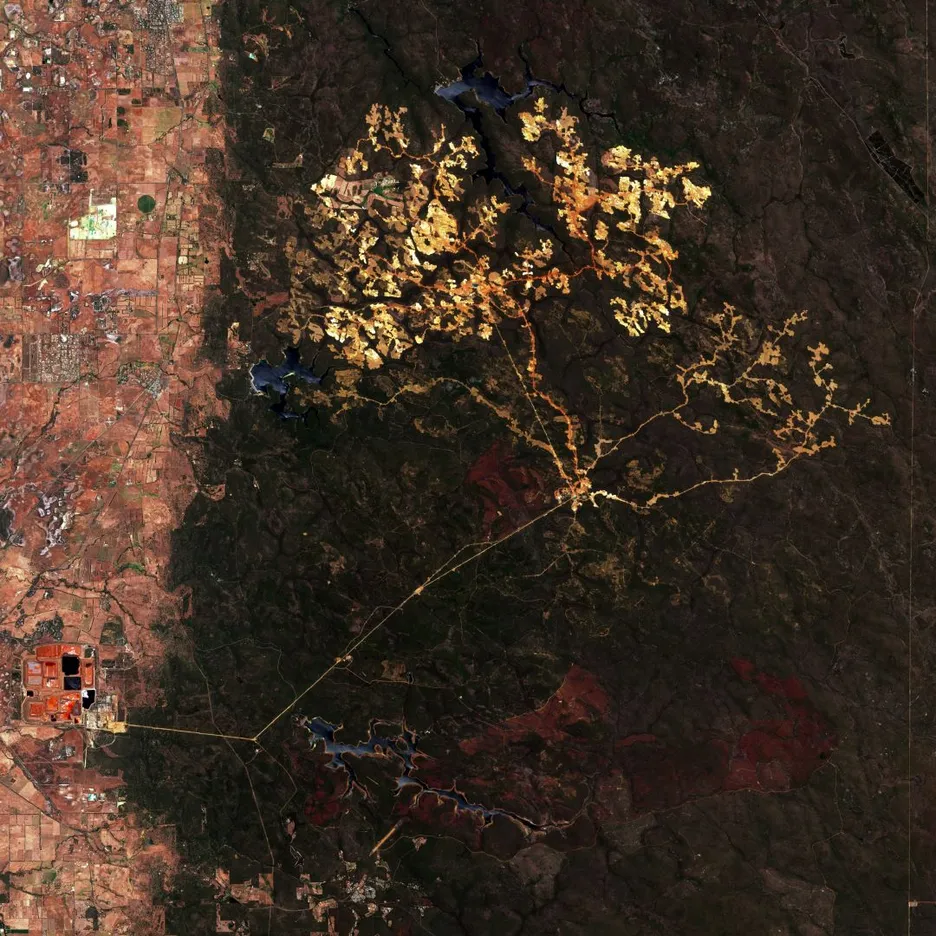
The Huntly bauxite mine in Australia is gradually extracting the raw material for aluminum production, creating a brain-like pattern in the landscape. The operating company Alcoa Inc. is currently the second largest aluminum producer in the world and is responsible for around 13% of global aluminum production with the sedimentary rocks from the Huntly and nearby Willowdale bauxite mines.

The estuary of Pearl River at the shores of the South China Sea is also known as world's factory. It is home to the cities of Hong Kong, Shenzhen, Guangzhou and Macau, among others. Located in mainland China, the area is characterized by its eventful colonial history, which still has far-reaching consequences for the people living there today. The former colonial cities of Hong Kong (formerly Great Britain) and Macau (formerly Portugal) are a recurring subject of national and international societal discourse.

Bauxite, the raw material for the aluminum industry, has been mined in the region around the Rio Nunez in Guinea - and especially in Sangarédi - since 1973. Several million tons of the red rock are shipped annually via the port of Kamsar, a planned city built by the mine operator. According to current knowledge, Guinea has the largest bauxite reserves in the world. However, the extraction of the raw material is repeatedly discredited due to damage to the environment and the health of the local population.
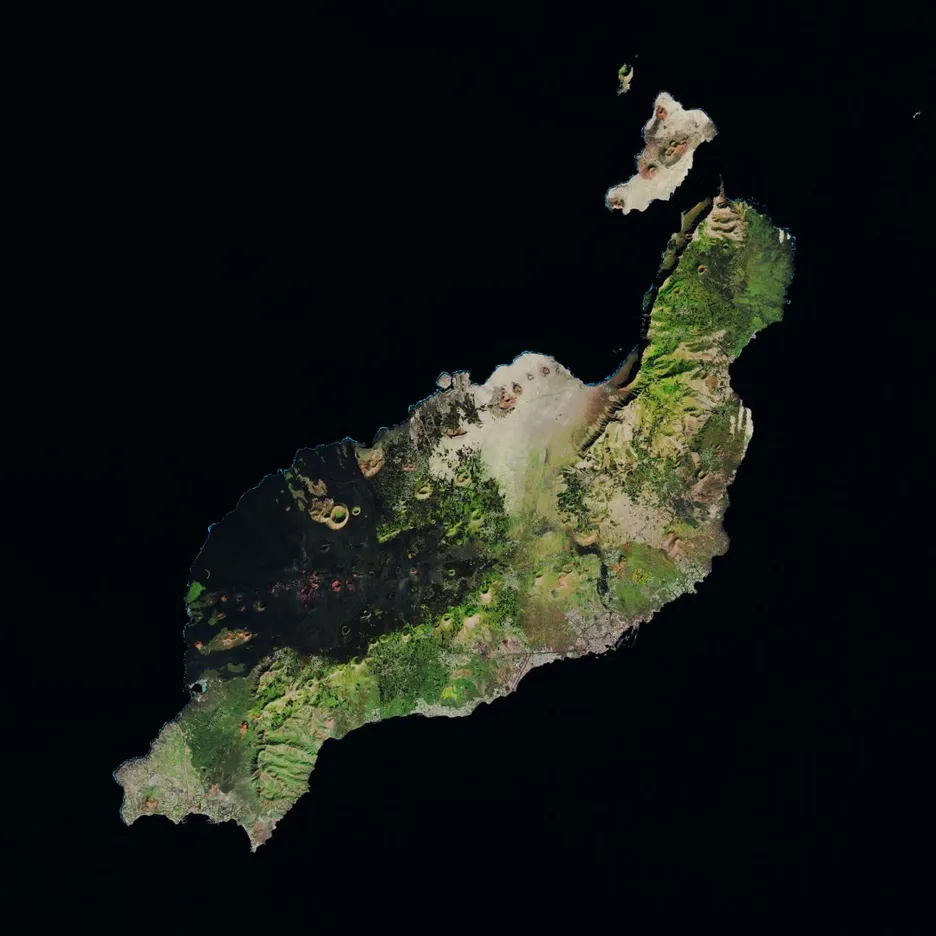
Lanzarote is one of the Canary Islands in the Atlantic and of volcanic origin. This can be seen very clearly on site, but also in the infrared image by the different colors. Note the large black area, even in visible light, which mainly originated from eruptions in the 18th century. Today it is known as Timanfaya National Park and attracts numerous visitors every year. The contradiction between the hostility and fertility of the volcanic activity on Lanzarote was highlighted in particular by the artist and environmentalist César Manrique.
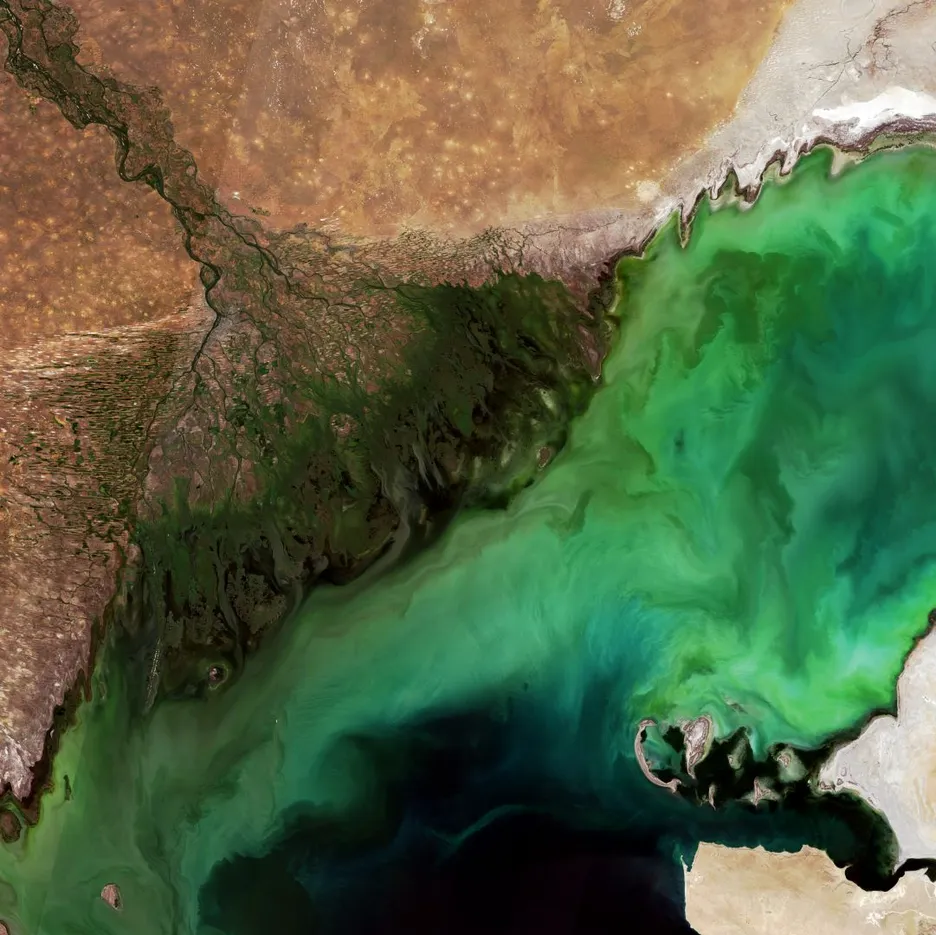
The extensive mouth of the Volga into the Caspian Sea, Europe's largest river delta, regularly impresses with a strong algae bloom. This natural spectacle, which can be seen particularly clearly in the true color image, also spreads throughout the entire landlocked sea at times. The world's largest lake is threatened by steadily falling water levels, which will have far-reaching consequences, at least, for the Caspian region.

The Amazon , the world's most water-abundant river, flows through the basin of the same name with its rainforests. In addition to deforestation for agricultural purposes, the raw materials industry - including bauxite mining - is also threatening the tree population and, thus, biodiversity. The year 2023 was characterized by a pronounced drought, which further damaged the already endangered habitat.

The image shows streams of water in the middle of the Libyan Desert, which are atypical at this scale. In September 2023, Storm Daniel, which was extremely rainy for this region, cost the lives of thousands of people in the city of Derna alone: two dams in the Wadi Derna burst and entire parts of the city were overrun by the floods.
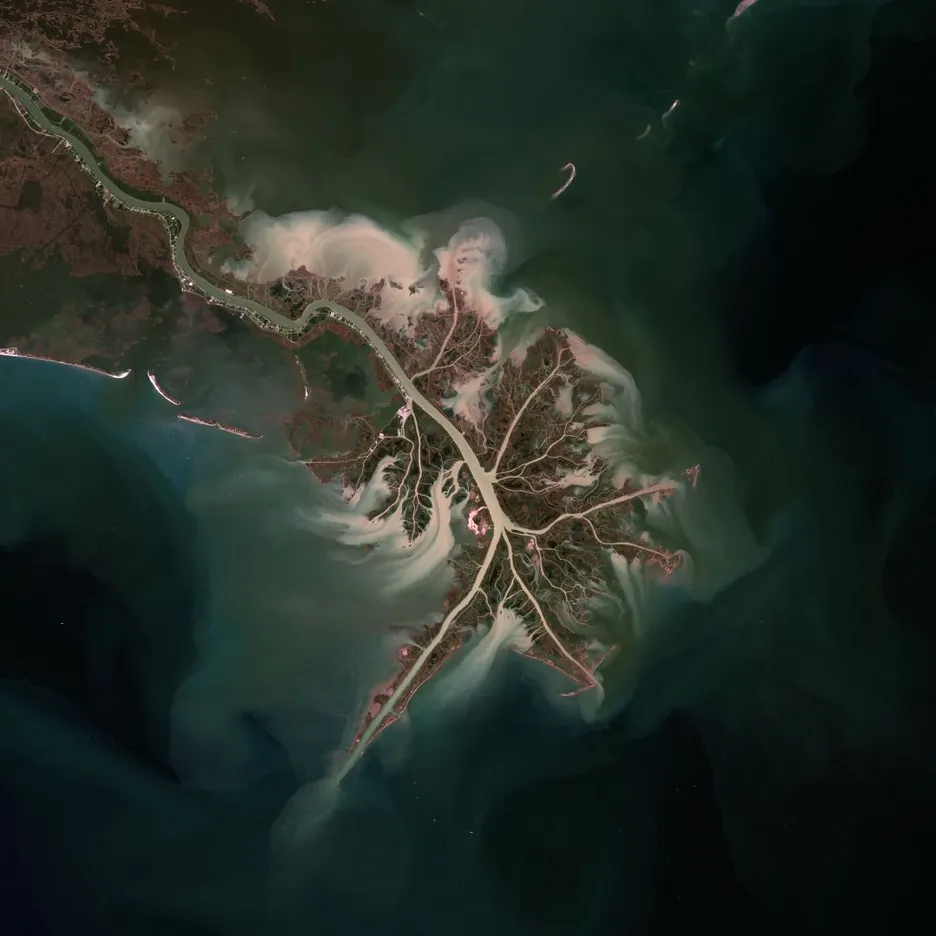
Since the end of the last ice age, the Mississippi River delta has been shifting the coastline of today's USA further and further into the Gulf of Mexico due to heavy sediment deposits. It is known for its extensive marshlands, in which the city of New Orleans is embedded also. The latter was hit particularly hard by Hurricane Katrina in 2005 as a result of this special location, losing around half of its population in the course of the associated evacuation. Since then, only a margin has returned to the city.
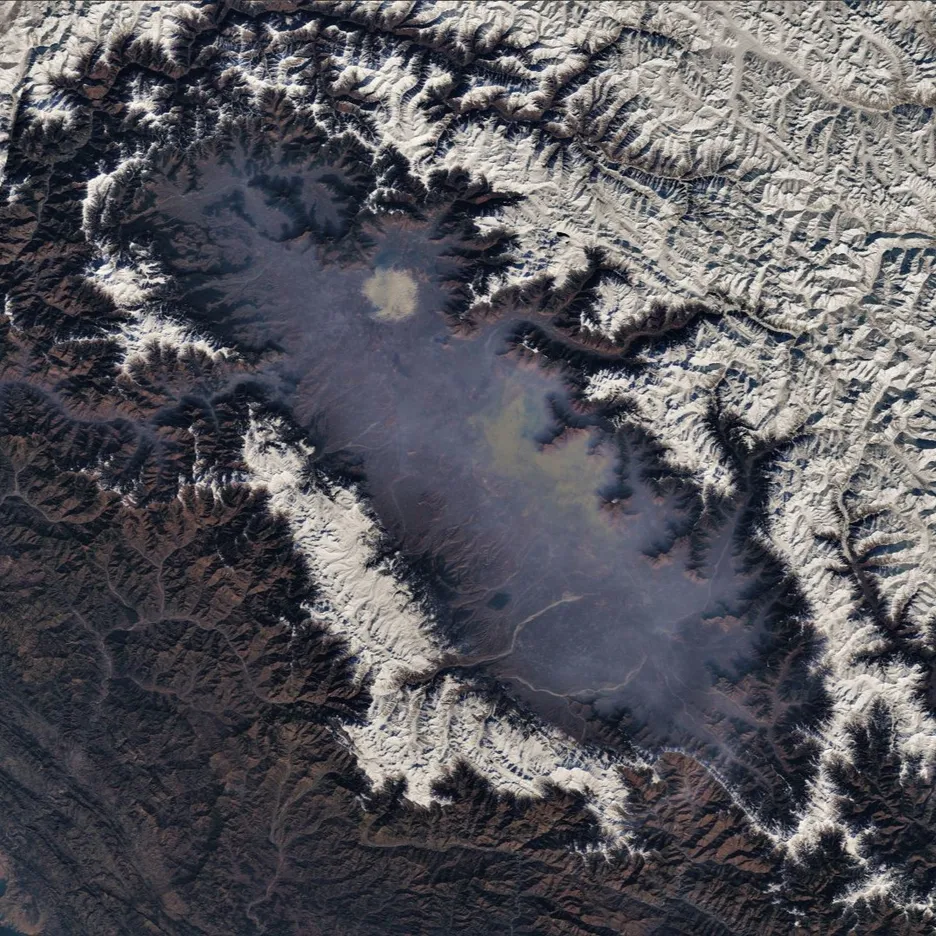
The Kashmir Valley in the far northwest of India is around 35 km wide, 135 km long and surrounded by high mountains. Especially at the start of the heating season, a smog cover forms in the valley during athmospheric inversion, as most of the heating is still done with coal and wood. The valley's only major city, Srinagar, contributes to this air pollution in particular. The small patch of clouds and therefore moisture in the north-west of the valley emerges from Wular Lake, which is located in the area below the clouds.

The Grand Canyon is one of the largest canyons in the world. It is particularly impressive due to the colors that the waters of the Colorado River have carved out of the plateau of the same name over millions of years. Contrary to popular belief, snow falls in the Grand Canyon area during the winter months on a regular basis, contrasting with the colorful layers of sediment.